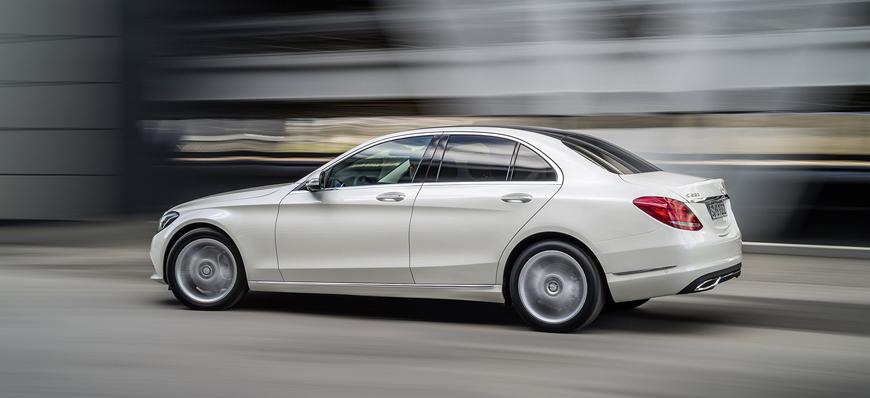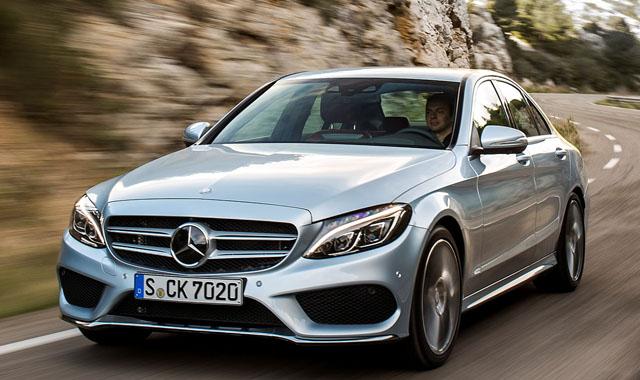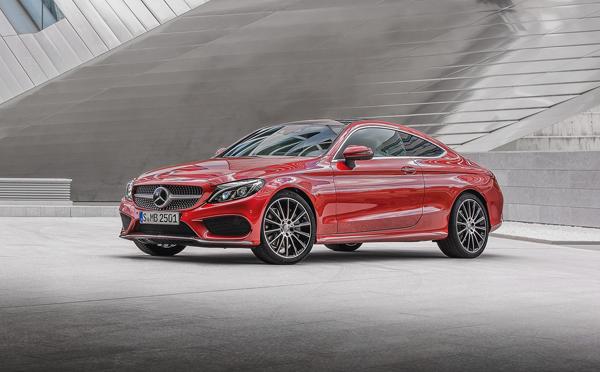You are here
Mercedes-Benz C180 Avantgarde: Compact luxury
By Ghaith Madadha - Jul 11,2016 - Last updated at Jul 11,2016

Photo courtesy of Mercedes-Benz
Launched in 2014 as Mercedes’ fifth compact executive saloon since the 190 first appeared in the 1980s, the C-Class has become a more luxurious and technologically advanced car. Closer to a junior luxury car and first stepping stone towards Mercedes’ flagship S-Class luxury saloon, the current C-Class vacates the “Baby Benz” mantle to the front-drive A-Class hatchback and CLA-Class saloon.
Confident in its Mercedes-Benz character and seemingly un-concerned with competing with others on their own terms, the current C-Class’ luxury credentials include the segment-first use of optional air suspension — usually reserved for full-size luxury cars. With a broad range of models available from C160 to fire-breathing AMG C63, the driven C180 Avantgarde is luxuriously appointed, versatile and efficient with accessible yet confident performance parameters.
Fluent lines
Taking its design cues from Mercedes’ S-Class luxury flagship, the C-Class features elegant curves, sporty proportions and toned body, utilising discrete concave and convex surfacing. Distinctly luxurious, with long wheel-arch to A-pillar distance to highlight its rear drive platform, the C-Class’ smoothly arcing roofline and strong shoulders fluently taper towards a descending boot line.
Driven in Avantgarde trim level, the C-Class features a two-slat grille with body-colour grille outline with large tri-star emblem embedded within, rather than the traditional three-slat grille with bonnet-mounted emblem. Emphasising different facets of the C-Class’ character, Avantgarde isn’t as aggressive as optional AMG trim, but sportier than other trims, and includes thin twin-slat and mesh side intakes.
Elegant yet subtly athletic, with broad grille, flowing lines and charismatic surfacing, the C-Class features low CD0.27 aerodynamic drag for enhanced efficiency and highway refinement. Lighter than its predecessor by 100kg lighter owing to increased aluminium body content of 50 per cent and energy-saving features like electric-assisted steering, the current C-Class is up to 20 per cent more efficient.
Small but punchy
The second to entry level C-Class model, the C180 is powered by a 1.6-litre direct injection engine, turbocharged rather than supercharged as in previous generation, for enhanced efficiency. Developing 154BHP at 5300rpm and 184lb/ft throughout 1200-4000rpm and driving its rear wheels through an automatic 7-speed gearbox, the 1,425kg C180 accelerates through the 0-100km/h benchmark in 8.5 seconds and can attain 223km/h.
Responsive at low-end with little by way of turbo-lag, the C180 is responsive and muscular in mid-range for such a small engine, driving up steep inclines on rural Jordanian roads with confidence. Punchy in mid-range, the C180 is, however also seamless as power accumulates and eager to spin towards peak power, despite its low-revving character.
Smooth and responsive in sportier selectable settings and manual mode shifting, the C180’s 7-speed gearbox uses a broad range of ratio’s to eke the best of its compact engine. Aggressive lower gearing provides responsive acceleration while taller gears provide cruising refinement and efficiency. With stop/start system, the C180 returns 5.4l/100km combined cycle efficiency — only just less frugal than 2-litre C200 and C250 sister models.
Smooth and settled
Riding on four-link front and five-link rear suspension with optimised road surface vibration paths, lowered centre of gravity and near ideal weight balance, the C180 is smooth, poised, stable and refined at speed. Additionally, it is agile and tidy through switchbacks — with responsive, precise and well-damped steering — and manoeuvrable on narrow lanes and congested city streets.
With small light engine at the front and improved weighting, the C180 turns tidily and eagerly into corners, with balanced handling and good body control, before one re-applies throttle and unlocks the steering as the rear 225/50R17 tyres dig into the road before pouncing onto a straight. Nimble and settled, the C180’s mechanical suspension also provided buttoned down vertical rebound control.
Incorporating more high strength steels and adhesives, and larger frame components, the current C-Class is stiffer, with handling, performance, refinement, fuel efficiency and crash safety benefits. With much improved noise vibration and harshness refinement, the C180 rides smooth and poised. During an extensive test drive only one especially jagged bump at a specific frequency and low speed was felt slightly more than expected.
Refined and well-equipped
Larger yet lighter than the previous C-Class, the current model gains 40mm width, while its wheelbase is increased by 80mm for improved rear legroom, while boot volume rises to 38 litres. Quiet, comfortable and refined inside, the C-Class’ well-appointed cabin features comfortable, supportive and highly adjustable and versatile front seats, ergonomically accommodation a broad and diverse range of driver sizes.
Classy and elegant utilising quality upholstery, trim and materials the C-Class Avant-garde feels and looks like a compact luxury car. Driven with light leather seats and black dashboard, steering and glossy console the C-Class features stylish design including three metal-ringed round centre vents, cone-like instrumentation, tablet-style infotainment screen and touchpad and rotary menus access. Meanwhile, good visibility allows one to accurately place the car on road.
Extensively well equipped with convenience, comfort, safety and Internet-enabled infotainment system, the C-Class is available with optional cross-traffic sensing brake assistance, stop/start cruise control, lane keeping assistance and a collision prevention system able to prevent or mitigate collision severity up to 40km/h collision and 200km/h respectively. The driven C180 Avantgarde also featured dual-zone climate control, rain sensing wipers and standard run-flat tyres.
TECHNICAL SPECIFICATIONS
Engine: 1.6-litre, turbocharged, in-line 4 cylinders
Bore x stroke: 83 x 73.7mm
Compression ratio: 10.3:1
Valve-train: 16-valve, DOHC, direct injection
Gearbox: 7-speed automatic, rear-wheel drive
Ratios: 1st 4.38:1 2nd 2.86:1 3rd 1.92:1 4th 1.37:1 5th 1:1 6th 0.82:1 7th 0.73:1
Reverse: 1st 3.42:1 / 2nd 2.23:1
Final drive ratio: 3.07:1
0-100km/h: 8.5 seconds
Maximum speed: 223km/h
Power, BHP (PS) [kW]: 154 (156) [115] @5300rpm
Specific power: 96.5BHP/litre
Power-to-weight: 108BHP/tonne
Torque, lb/ft (Nm): 184 (250) @ 1200-4000rpm
Specific torque: 156.7Nm/litre
Torque-to-weight: 175.4Nm/tonne
Fuel consumption, urban / extra-urban / combined: 6.8-/4.6-/5.4 litres/100km
CO2 emissions, combined: 126g/km
Fuel tank: 66 litres
Length: 4,686mm
Width: 1,810mm
Height: 1,442mm
Wheelbase: 2,840mm
Track, F/R: 1,588 / 1,570mm
Overhang, F/R: 790/1,056mm
Aerodynamic drag co-efficiency: 0.27
Headroom, F/R: 1,039/942mm
Boot capacity: 480 litres
Payload: 565kg
Kerb weight: 1,425kg
Steering: Power-assisted, rack and pinion
Turning circle: 11.22 metres
Suspension: Multi-link, anti-roll bars
Brakes, F/R: Ventilated discs/discs
Tyres, F/R: 225/50R17
Related Articles
Larger and more comfortable, luxurious and advanced, the latest generation Mercedes C-Class however boasts significant weight, fuel consumption and emissions reductions.
Launched earlier this year the latest incarnation of Mercedes-Benz junior executive C-Class model line is a larger and more luxurious and high tech offering than the car it replaces.
First revealed late last year at the Frankfurt Motor Show and making its regional Middle East debut earlier this month, the Mercedes-Benz C-



















